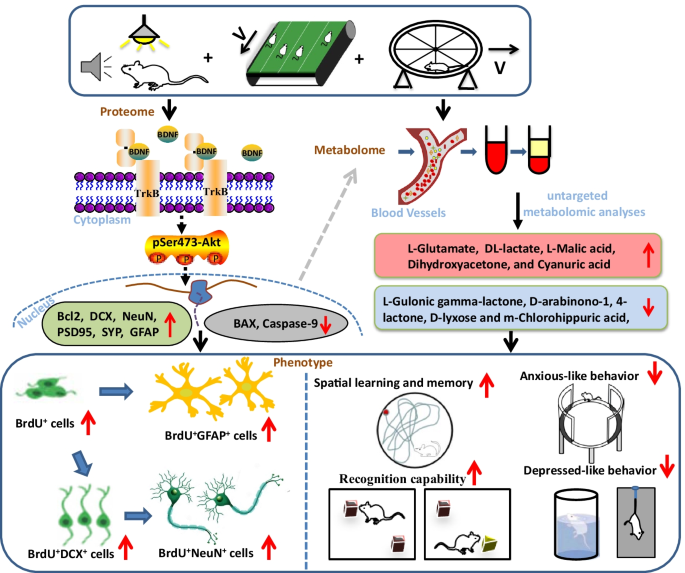I want to know how in hell you would ever translate involuntary treadmill running in mice to a human model. With no answer this research is useless.
Effects of Involuntary and Voluntary Exercise in Combination with Acousto-Optic Stimulation on Adult Neurogenesis in an Alzheimer's Mouse Model
Molecular Neurobiology (2022)
Abstract
Single-factor intervention, such as physical exercise and auditory and visual stimulation, plays a positive role on the prevention and treatment of Alzheimer’s disease (AD); however, the therapeutic effects of single-factor intervention are limited. The beneficial effects of these multifactor combinations on AD and its molecular mechanism have yet to be elucidated. Here, we investigated the effect of multifactor intervention, voluntary wheel exercise, and involuntary treadmill running in combination with acousto-optic stimulation, on adult neurogenesis and behavioral phenotypes in a mouse model of AD. We found that 4 weeks of multifactor intervention can significantly increase the production of newborn cells (BrdU+ cells) and immature neurons (DCX+ cells) in the hippocampus and lateral ventricle of Aβ oligomer-induced mice. Importantly, the multifactor intervention could promote BrdU+ cells to differentiate into neurons (BrdU+ DCX+ cells or BrdU+ NeuN+ cells) and astrocytes (BrdU+GFAP+ cells) in the hippocampus and ameliorate Aβ oligomer-induced cognitive impairment and anxiety- and depression-like behaviors in mice evaluated by novel object recognition, Morris water maze tests, elevated zero maze, forced swimming test, and tail suspension test, respectively. Moreover, multifactor intervention could lead to an increase in the protein levels of PSD-95, SYP, DCX, NeuN, GFAP, Bcl-2, BDNF, TrkB, and pSer473-Akt and a decrease in the protein levels of BAX and caspase-9 in the hippocampal lysates of Aβ oligomer-induced mice. Furthermore, sequencing analysis of serum metabolites revealed that aberrantly expressed metabolites modulated by multifactor intervention were highly enriched in the biological process associated with keeping neurons functioning and neurobehavioral function. Additionally, the intervention-mediated serum metabolites mainly participated in glutamate metabolism, glucose metabolism, and the tricarboxylic acid cycle in mice. Our findings suggest the potential of multifactor intervention as a non-invasive therapeutic strategy for AD to anti-Aβ oligomer neurotoxicity.
Graphical abstract

This is a preview of subscription content, access via your institution.
Data Availability
The data generated during the current study are available from the corresponding author on reasonable request.
No comments:
Post a Comment